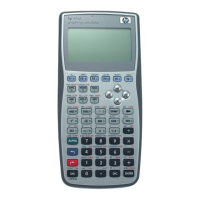6-18 The Development Library
Using SKELSE, SKEC, SKENC, SKLSE instructions, two blocks create an IFNOT-THEN-ELSE structure.
These instructions
Are equivalent to Or in high-level language
bB[8dB!Dr62
P<D!
f!
!!<T6:!
!!52!
h!
Dr<ED<!
f!
!!B'3dB!
!!<T6:!
!!52!
h!
bB[8dB!>LP<DdS)mH!
.dS)m3!
!!>L:Ld<G(H!{!$G(!Gkp!<G(3
!!>L:LdS)m3!
.d<G(3!
>L:Ld<G(H!
.dS)mH!
!!B'3dB!
!!>L:Ld<G(H!
!!>L:LdS)mH!
.d<G(H!
67!=L:!B[8!:;<=!
!!S<>6=!
!!!!ddd!
!!!!ddd!
!!<=4!
<ED<!
!!S<>6=!
!!!!ddd!
!!!!ddd!
!!!!ddd!
!!<=4!
Note: SKELSE places a GOTO between the 2 blocks, SKEC places a GOC, SKENC a GONC and SKLSE places
nothing.
Notes:
52s are compiled directly when encountered while!<T6:Z and block openings are compiled later on. You can not
have more than 64 pending EXITs and block openings simultaneously.
4.2.3 Tests
A test instruction (bB[8dB) may be followed by:
• A
>LP<D!E$%)u, →!E$%)u or!09!E$%)u instruction
• A -> { or → { instruction. In this case, the test is inverted and a skip block is open.
• A
!K:P or K:=P<D instruction.
• A
Dr62P<D!f or f instruction. In this case, a skip block is open.
• A
>L:L,!>L:LE, >LNE=>,!>LD5S,!>LD5SE!or!>LDSNE. In this case, the test is inverted and a proper
jump instruction is generated (ie:
bB[SdB!>L:L!B is compiled as bBgSdB!f!>L:L!B!h.
• A
<T6: or!52.
4.2.4 Saturn instructions syntax
In this section:
x is a decimal number between 1 and 16. An expression can be used if its value can be determined at the first
encounter.
h is a hexadecimal digit.
a is a decimal number ranging from 1 to 16 or a 0 to 15 number depending of the current mode (0-15 or 1-16). An
expression can be used, if it’s value can be determined at the first encounter.
f is a field A, B, X, XS, P, WP, M, S, F1, F2, F3, F4, F5, F6 or F7.
Reg is a working register A, B, C or D.
RReg is a scratch register R0, R1, R2, R3 or R4.
Exp is an expression.
Cst is a decimal constant. An expression can be used if its value can be determined at the first encounter.
DReg is a pointer register D0 or D1.
Data is memory data pointed by D0 or D1. It means
!4B:8 or!4B:3.
Note: For instructions that use two working registers, instruction using the pairs A-B, B-C, C-D and A-C are smaller
and faster (if the
7G fields are not used).
For instructions like Reg1=Reg1… you can write only Reg1… Example:
!B[B'OdB is the same as B'OdB.

